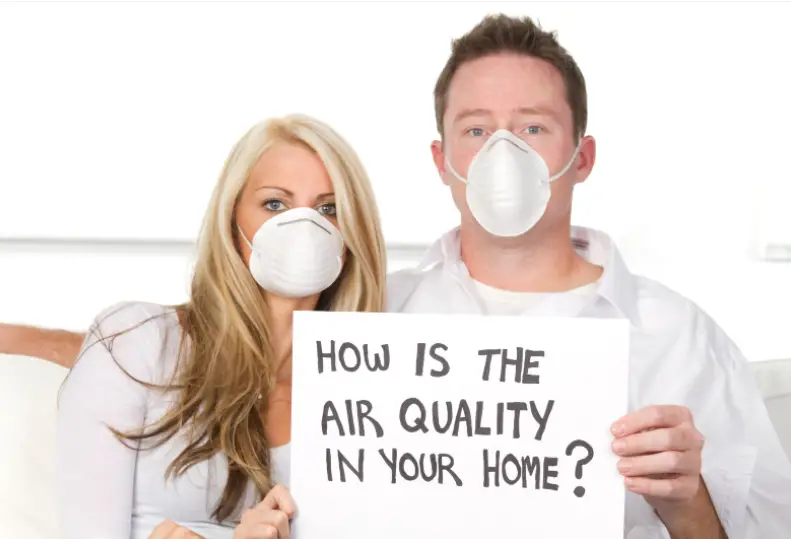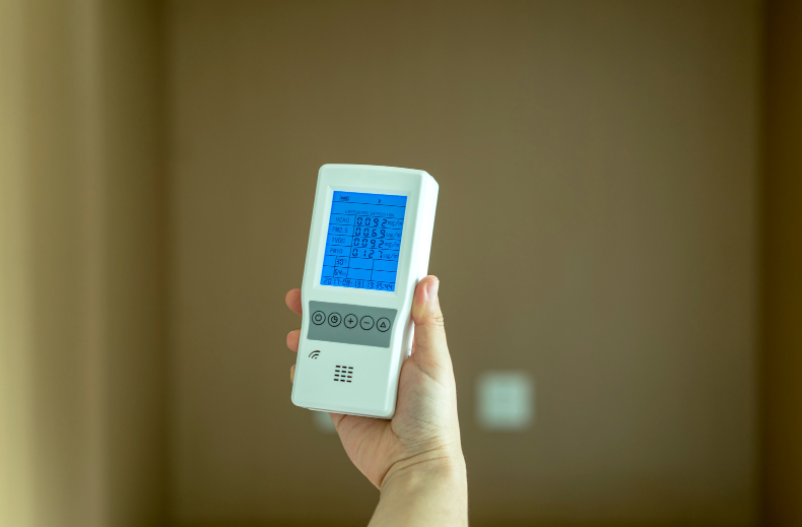
In today’s time, airborne illnesses are rampant, so what are the 4 major indoor air pollutants that make you sick? Don’t worry – we will answer that and more in this article because we care about your health.
Air pollutants are dangerous – they will compromise your health if you let them into your indoor air and eventually contaminate your lungs. Even though they look harmless at first, the symptoms will get severe if you let them loose.
That’s why we want you to take action before they make you sick. We wrote this guide to help you become informed of the most common air pollutants at home, as well as ways to test for and prevent them from coming indoors to keep you and your family safe from harm.
How is air quality determined?
AQI, also known as Air Quality Index, is an international scale that determines the air quality in any given area. More often, your local science and technology department will determine and make public announcements about the AQI at a given time, similar to the outdoor and indoor temperature given in weather forecasts.
The scale goes from 0 to 500, in which 0 to 50 is the cleanest air while the highest levels of 301 to 500 mean hazardous air quality. But what does unhealthy air quality mean? Living with unhealthy air means that you’re more exposed to sickness. Particularly, asthma and allergy symptoms worsen with unhealthy air plus you’re also at risk for airborne illnesses, such as the flu.

What are the four most dangerous indoor air pollutants?
Your indoor air can be compromised by different air pollutants, which will end up in your lungs, potentially causing health problems! Here are some indoor air pollutants that are a threat to your health:
1. Carbon Monoxide
Most of us have heard about carbon monoxide poisoning. When inhaled in large amounts, carbon monoxide is fatal to humans and all living things. What carbon monoxide does is hinder our red blood cells so they won’t be able to deliver oxygen throughout the body.
Carbon monoxide poisoning is characterized by shortness of breath, dizziness, blurry vision, nausea, headaches, increased heart rate, and even fainting or lack of consciousness. Usually, gas-powered appliances, such as generators, are sources of carbon monoxide poisoning.
2. Asbestos
If you suddenly feel tightness or pain in your chest, as well as difficulty in breathing, swallowing, or eating, it is a symptom of prolonged asbestos exposure. Asbestos is commonly found in building materials so it’s not uncommon to get exposed to them if you are near a construction site.
Asbestos has fibers that can cause inflammation to your lungs when gathered in large amounts. In some cases, cancer can occur if you inhale a large amount of asbestos.
3. Lead
Even though lead is one of the natural elements of the earth (as you’ll see on the periodic table), it has hazardous effects on human health and living creatures when inhaled in large amounts. Lead is almost all around us – from construction materials to batteries.
But what makes lead an air contaminant? When paint or any construction material gets chipped off, it becomes an air pollutant and it could go into your lungs. That’s when it can be detrimental to your health when you inhale too much of it.
In children, lead-based toys and whatnot have been linked to behavioral and growth problems, which is why many governing bodies decided to ban such lead-based products altogether. Today, many of the construction materials are starting to detach from the lead formula.
4. Mold
Although mold looks harmless at first, if you let them loose for a long time and live with them, mold will cause various kinds of respiratory problems and even skin diseases such as dermatitis. Mold will also worsen asthma and allergic rhinitis, as well as cause eye and nose irritation.
If you suffer from stuffy air indoors and experts did not detect any poisonous gas around, you likely have mold. Not to worry – mold is a common household problem and it can be cleaned up and prevented with the right methods.
Mold often forms in damp places, such as the laundry room. In most cases, mold often infests homes that live near the ocean or in a tropical climate, which is why you’ll need to manage your indoor humidity for that.

What causes poor indoor air quality?
If you ever wonder what worsens your indoor air quality, here are some possible reasons:
- You have mold infestation at home
- Frequent use of household chemicals
- Your pets stay indoors often
- Lack of proper ventilation
- Not cleaning the house too often
To remedy such problems, you’ll need to clean your indoor space often, go for the best air purifier on a budget, and improve your ventilation so that air will circulate properly (and not lock up the dust indoors).

How can I test the air quality in my home?
If you asked experts on “how much fresh air does a house need?” then their answer will depend on the size of your house/room in question, as well as other factors like your local AQI and geography. With that said, it’s also possible to test your air quality inside your home with the following:
1. IAQ Monitor
This is a device that works like a thermometer, except that it detects air quality instead. A standalone monitor will detect even poisonous gases.
2. Mold testing
Visible mold, such as dark specks on your walls and whatnot, doesn’t require professional testing. However, if you are unsure if your home (especially if you’ve just moved in) has excessive mold concentrations, you may need to contact a professional in your area.
3. Specific tests and alarms for certain gases
If you have any gas-powered appliances, such as furnaces and generators, you’ll need to have a carbon monoxide alarm. Such an alarm will help you determine if there is already carbon monoxide in your home, as it’s hard to tell due to its odorless quality.
You can also purchase a radon test kit if you’ve just moved into a new home. Radon is also a hazardous and cancer-linked gas that’s undetectable through the human nose. That’s why it’s also a good idea to test for it.
Conclusion
The indoor air pollutants we mentioned above are just 4 major contaminants – there can be more depending on what’s detected in your home or work quarters. If you often experience those symptoms when you stay indoors often, don’t hesitate to get your home tested for such air pollutants and consider air cleaning solutions to keep you and your family safe.


